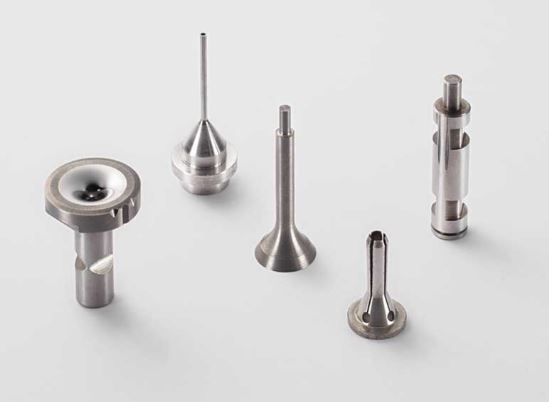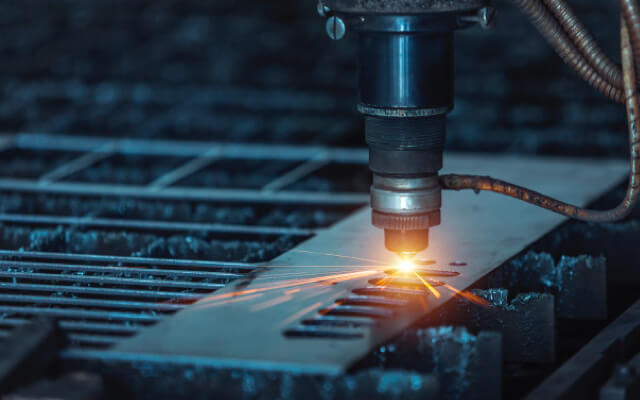Carbide is one of the most valued materials in the engineering world. The material results from combining carbon with a metallic or semi-metallic element. Although not as popular as iron and steel, the material is equally used in making engineering tools and equipment.
Common examples of carbide applications are the production of cutting, drilling, grinding, abrasives, and polishing tools. Industries that use them include aerospace, jewelry, surgical tools manufacturers, and milling industries. Carbide tools are very durable and do not react with elements of nature. They also have high wear resistance and are perfect for highspeed functions over long periods. If you use carbide tools, their immense strength and hardness will leave you wondering how they were formed. That wouldn’t be a mystery anymore when you are through reading this piece. But first, what is carbide machining?
What is carbide machining?
Machining refers to all the processes involved in removing materials from a mass till it attains a desired shape and size. The procedure is used when creating machine parts, tools, and other engineering components from a block of engineering material. A typical machining process involves turning, grinding, and milling. But carbide is particularly hard and resistant to wear and cuts from the conventional metals used for machining. Hence, only cutting wheels with diamond tips can work on it. Another alternative is using thermal energy through a process known as an electrical discharge machine (EDM). In carbide machining services, the removal of carbide pieces is controlled from a carbide block or ingot to attain a required shape and size.
How carbide tools are made
In a carbide machine shop, tools are in different grades, namely, wear-grade, impact-grade, and cutting grade. Each has its application. For example, everyday items such as fishing rods and reels are wear-grade carbide tools. The tip of a mining drill is an impact-grade carbide implement.
Generally, there are two varieties of carbides. These are metal carbides and non-metal carbides. Their differences are principally from the type of compound the manufacturer mixes with carbon.
The process of making carbide tools:
1. Making the carbide blanks or ingots
2. Machining the blanks
3. Finishing
4. Making Carbide Blanks
Once you decide the type of carbide material you want for your tool, you can begin by directly mixing the already prepared carbide ore with a binding material, such as cobalt or nickel. Note that mixing should be in proportions by weight, depending on the type of tool you want to make. Usually, between 3 and 15% is often used for producing cutting tools. Next, the mixture is transferred into a die cavity and pressed. The resulting mix would be chalky in strength. Then, transfer the compressed mixture into a sintering furnace and heat at temperatures below the compound’s melting. Around 1400 degrees Celcius is perfect in this case. During this process, the mechanical strength and density of the compound increase. There is also a considerable volume reduction afterward. The final product is your cemented carbide blanks, bested only by a few materials in strength.
Machining the blanks
The carbide ingots need to be cut to the required shapes and sizes. Machining carbide follows the same standard process as other metals. Generally, the procedures for arriving at a tool depend on what you are creating. These processes include:
Cutting: The tip of the cutting machine must be made from a stronger material, and the process is done inside a cooling fluid. That is to eliminate deformation from the intense heat that would be produced between the cutting teeth and the object.
Turning: this process is essential in creating round-shaped tools. A lathe is used for the operation.
Milling: This removes materials from the block by rotating a cutting blade. The machine for this operation is called a miller.
Grinding: It’s a finishing operation for smoothening any rough surface in the tool. A grinder is used for this procedure.
Drilling and Boring: The first process creates a hole in the workpiece, and the second enlarges the object using drills and boring bars, respectively.
Interestingly, you do not need a special set of engines to machine carbide tools. What you must do is replace the parts that would connect with the blanks with a much harder material such as diamond and cubic boron nitride. Another way is to coat the regular pieces with any of these compounds. For example, you need a drill bit with a diamond tip to bore a hole through the carbide blank.
However, when the above machining processes are not feasible, manufacturers use intense heat. The process is referred to as electrical discharge machining (EDM).
Electrical Discharge Machining
There are different types of EDM processes. These include wire spark erosion and die-sinking EDM.
Generally, in EDM, a carefully controlled spark is created between an electrode and a workpiece immersed in a coolant. Dielectricum is the preferred coolant for this process. The spark produces intense heat to melt away a specific area on the object. The coolant flushes the materials eroded from the object.
Finishing: Giving the tools a smooth and appealing surface is crucial. Polishing and coating are two compulsory processes for achieving this.
Polishing: Carbide tools are usually polished to provide a smoother surface. Manufacturers often use a diamond lapping machine for this purpose.
Coating: There are two different methods of coating carbide tools to prolong their life span under extreme conditions. These are chemical vapor deposition (CVD) and physical vapor deposition (PVD).
Conclusion
Carbide machining is a delicate process, and machining companies use extreme care to produce each of the tools you see. The grade of carbide tools you want to manufacture would cause variations in the methods used.






